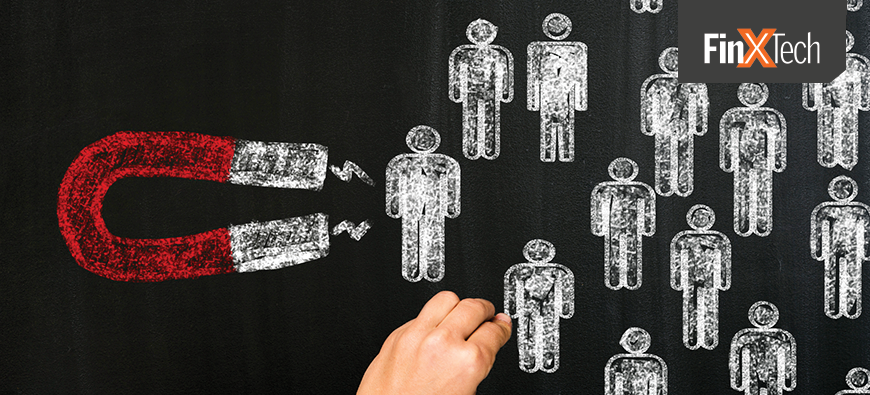
COVID-19: A Make-or-Break Moment for Customer Loyalty
It seems like the world is spinning faster these days. COVID-19 has caused dramatic shifts in the way people live their lives and manage their finances. Add record job loss to the mix, and you get a groundswell of people relying on their banks more than ever. It’s a make-or-break moment, as customers form new habits in response to their new reality.
Ryan Caldwell has a bird’s-eye view of how
customers are relying on their financial institutions’ data and digital tools
in this moment of crisis. As the CEO of MX, a Utah-based fintech, Caldwell
helps financial institutions collect, analyze, present and act on data. Right
now, the data is telling him this moment offers an opportunity for banks to
cultivate loyalty. At the same time, it presents big risks for banks that don’t
rise to the occasion.
In a recent interview, Caldwell told a story that serves as an interesting corollary for two approaches banks might take to navigate the crisis.
Driving down the streets of Lehi last week,
Caldwell noticed construction in the parking lot of a Chick-fil-A. He was
curious so, at the stoplight, he opened their app and placed an order. When he
pulled up to the window, the Chick-fil-A manager confirmed his order and handed
it over with sterile gloves. The receipt was in the app. It was an optimal,
socially distanced experience.
Caldwell asked the manager about the
construction. In a time when most restaurants are struggling to stay afloat,
Chick-fil-A, Caldwell was told, is converting half its parking spots into
mobile ordering stations. They’re experiencing exponential growth in mobile usage
and, without customers spending 45 minutes in the store, they’re able to
operate at redline capacity. They’re busier than ever.
Shortly after his Chick-fil-A experience,
Caldwell had an experience that better aligns with refrains we’re hearing in the
news about how restaurants are getting slaughtered without dine-in customers.
Caldwell’s family frequents a local pancake
place, but the restaurant has no mobile app and a terrible website. Still, when
your four-year old daughter has been cooped up in the house for weeks, you run
out of options. So Caldwell placed a phone order and ventured out.
When he pulled up, the restaurant looked deserted. He parked and went inside to pay for the order – touching door handles and PIN pads along the way. The pancake place’s manager had a completely different problem from Chick-fil-A’s: without dine-in customers, they had virtually no business. Caldwell says everyone in town loves this place’s pancakes – a lot more than they like Chick-fil-A – but it didn’t matter how much people love it if they don’t have a safe, easy way to get to it.
The restaurant analogy easily applies to
banks. The ones that provide a modern mobile experience are not only processing
basic transactions for their clients, they’re using data to provide helpful
insights and peace of mind in this crucial time. They’re able to increase
engagement and help their customers figure out just how much is safe to spend
on toilet paper stockpiles. They play a key role helping customers tackle daily
struggles.
Banks that aren’t leaning into technology risk losing out on these opportunities. Worse, they may not see that loss until we’re on the other side of this crisis.
Banks without data aggregation have no way of
knowing how their customers’ behavior is changing in response to this crisis.
They can’t see it when social distancing and closed branches cause customers to
download new apps, apply for a loan from a fintech or find a new way to move
money.
“Banks are completely blind to changing
consumer habits regarding digital banking if they don’t have aggregation,”
Caldwell says. “So I think a lot of banks may think they’re going to come out
of this at the end even stronger, but they are not realizing they’ve already
lost a battle. It’s just a question of time before that lingering account
dwindles down to the low balance, and then it either sits as a zombie account
or it goes to zero.”
In times of rapid change, banks can’t afford to fly blind by using lagging indicators based on last month’s reports. Caldwell says leading indicators – the tiny tremors in behavioral changes that only artificial intelligence can detect – will be crucial in helping customers and de-risking the bank.
And banks need to get their data and digital
experiences in place fast. The healthcare industry’s response to COVID isn’t to
take 18 months building a new hospital from the ground up, Caldwell says.
Healthcare administrators triage; they set up tents in parking lots and do
whatever they have to do to provide help where it’s needed most.
It is possible for banks to play catch-up quickly. Fintechs have come out in droves to support banks with accelerated launches and discounted services. For MX’s part, they can set up a data-driven mobile app that sits alongside the bank’s existing app in a matter of weeks.
“You don’t have time to retrofit your ancient
hospital,” Caldwell says. “If you want to take good care of your customers and
not let them down, you need to launch something in the next few weeks. The
world you live in right now is a world where that is not only possible, but
it’s requisite.”



